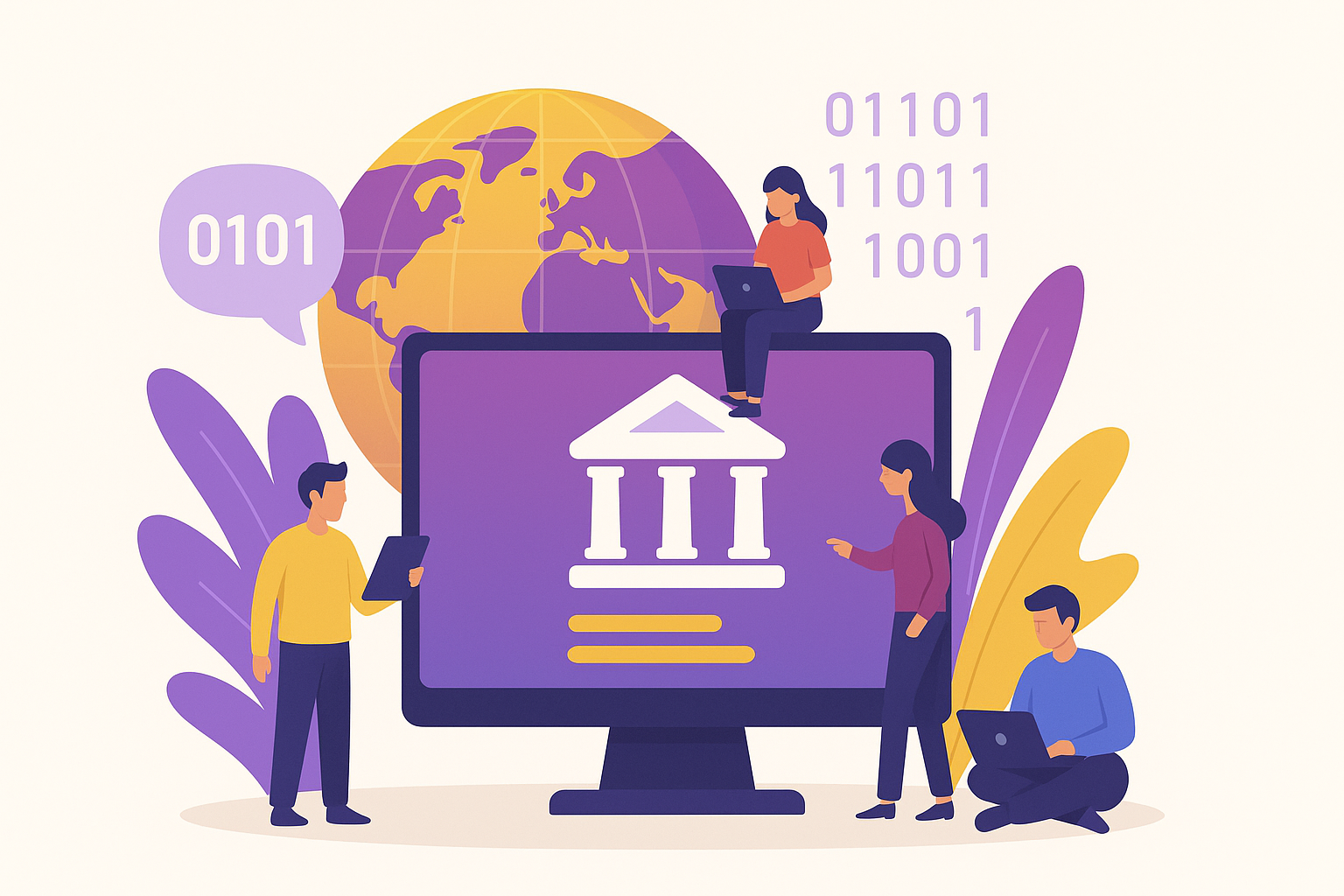Government digital transformation: a lever of efficiency for public services

Why is digital transformation essential?
Digital technology is transforming the way citizens interact with government. They now expect public services to be fast, accessible online, personalized and transparent - just as they experience with private services.
To meet these expectations, government agencies need to rethink their internal processes and tools, as well as the training and support they provide to their staff. Because while technologies are evolving fast, it's the people who make the difference in this transition.
Clear objectives: simplification, accessibility, efficiency
The government's digital transformation has several key objectives:
- Simplify administrative procedures: by doing away with paper forms and complex manual circuits.
- Make services accessible 24/7 via ergonomic, secure digital portals.
- Automate processes for greater efficiency and reliability.
- Reduce operating costs while improving service quality.
- Ensure transparency and traceability of interactions with the administration.
A good example is the service-public.fr portal, which centralizes a large number of online administrative procedures for citizens and businesses.
Challenges to overcome
Despite a strong political will and numerous initiatives launched in recent years, digital transformation in the public sector remains a complex undertaking, sometimes slowed down by structural and human obstacles.
Here are the main challenges identified:
- Resistance to change: public sector employees, like all staff, may express reluctance when faced with new tools or processes, especially when they perceive a lack of clarity about the benefits or a risk of loss of control.
- Heterogeneity of systems: each ministry, local authority or administration uses a set of tools that are often different, making it difficult to harmonize usage and ensure the coherence of digital paths.
- Insufficient interoperability: information systems do not always communicate effectively with each other, which limits the fluidity of data exchanges and undermines the overall efficiency of services.
- Digital divide: some citizens, particularly the elderly or geographically isolated, have limited access to digital services or have difficulty using them.
- Insufficient training: public-sector employees are often confronted with new software or platforms without appropriate support, leading to stress, errors and demotivation.
Digital adoption platforms (DAPs) play a key role in meeting these challenges. They enable users to be guided through their digital tools in real time, directly from their work environment. Thanks to contextual bubbles, interactive guides or targeted notifications, DAPs facilitate understanding, reduce errors and reinforce the autonomy of agents and users.
Public-sector employees: key players in the transition
It's not enough to simply make tools available. Agents need to be supported in assimilation them. This involves :
- Interactive guides integrated into tools
- Immersive training in professional skills
- Internal communication campaigns to raise awareness of the issues,
- Regular measurement of adoption to identify friction and optimize user paths.
Towards a rethought public user experience (UX)
Digital transformation is not just about technology. It is based on a user-centric vision (citizen, company, agent). This means :
- Co-design services with end-users,
- Adapting courses to different profiles (e.g. digital inclusion),
- Guarantee optimum accessibility (RGAA, plain language, human support).
Digital also makes it possible to personalize the experience and offer a proactive service, for example by informing citizens that a document has expired or that a procedure can be renewed.
Security, governance and digital sovereignty
Another fundamental issue is data protection. Public services deal with sensitive data and must guarantee :
- RGPD compliance,
- Robust cybersecurity,
- The use of sovereign clouds,
- Clear data governance, to avoid silos and promote interoperability.
The tools used must therefore be reliable, secure and interoperable with existing systems.
Measuring the impact of digital transformation
Finally, any transformation strategy must be evaluated. It is essential to measure :
- The rate of use of new digital services,
- Level of user satisfaction,
- Effective adoption by agents,
- Time savings and productivity gains.
Thanks to K-VALUEit is possible to monitor these indicators via an easy-to-use adoption cockpit, and adjust change management actions accordingly.
The digital transformation of government is a powerful lever for making the State closer, simpler and more efficient. But its success depends on three pillars:
- High-performance, accessible digital tools,
- The right human touch,
- Ongoing measurement of impact and adoption.
At Knowmore, we believe that the digital experience of agents is a determining factor in the quality of public services. That's why our solutions are designed to facilitate this transition, while putting people at the heart of modernization.
Are you a public administration undertaking a digital transformation project?
👉 Find out how K-NOW, K-STUDIO and K-VALUE can support your teams.
📅 Schedule a demo or talk to our experts to find out more.
.png)
